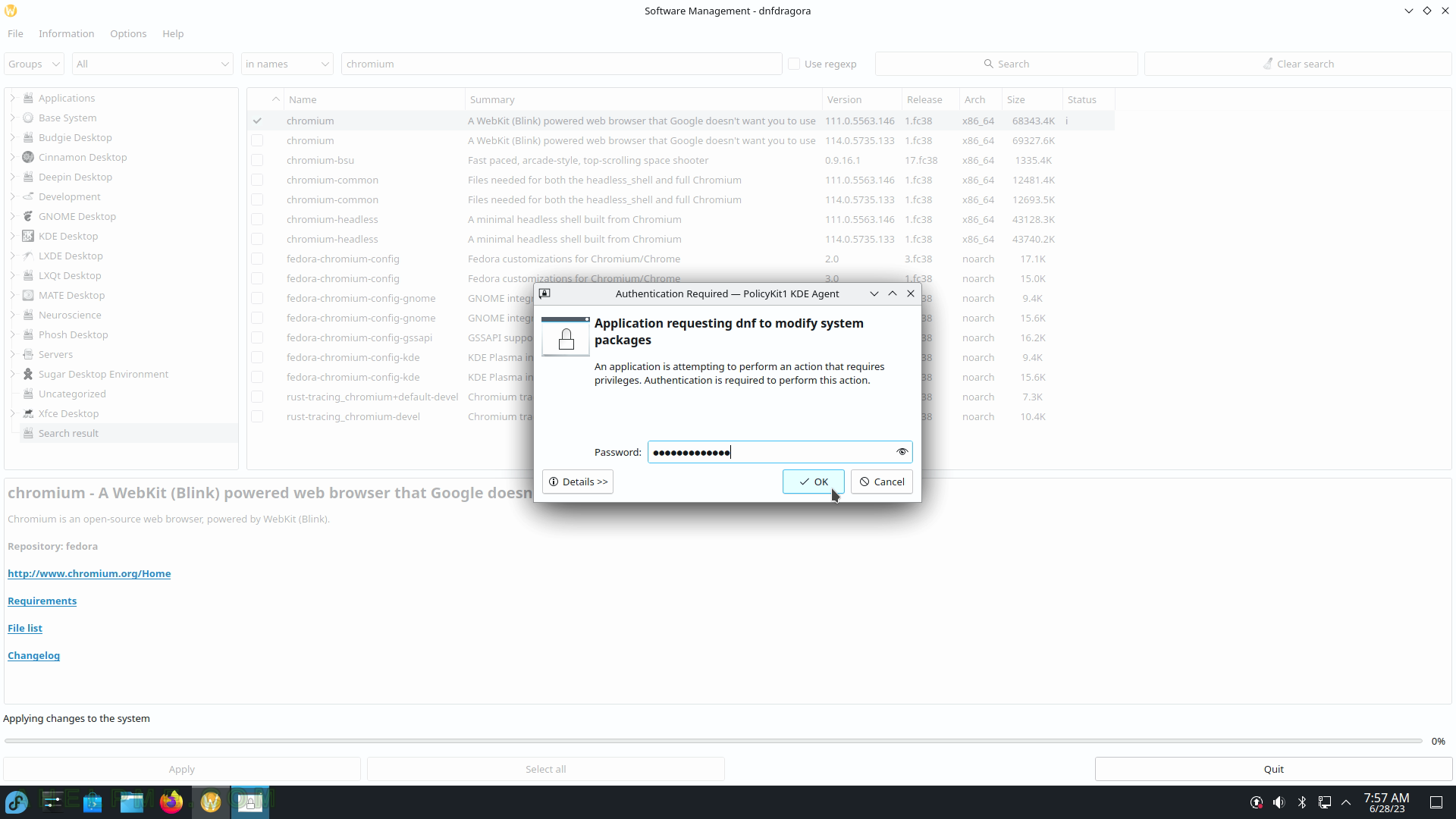SCREENSHOT 46) The new activity “test” is active and on focus now.
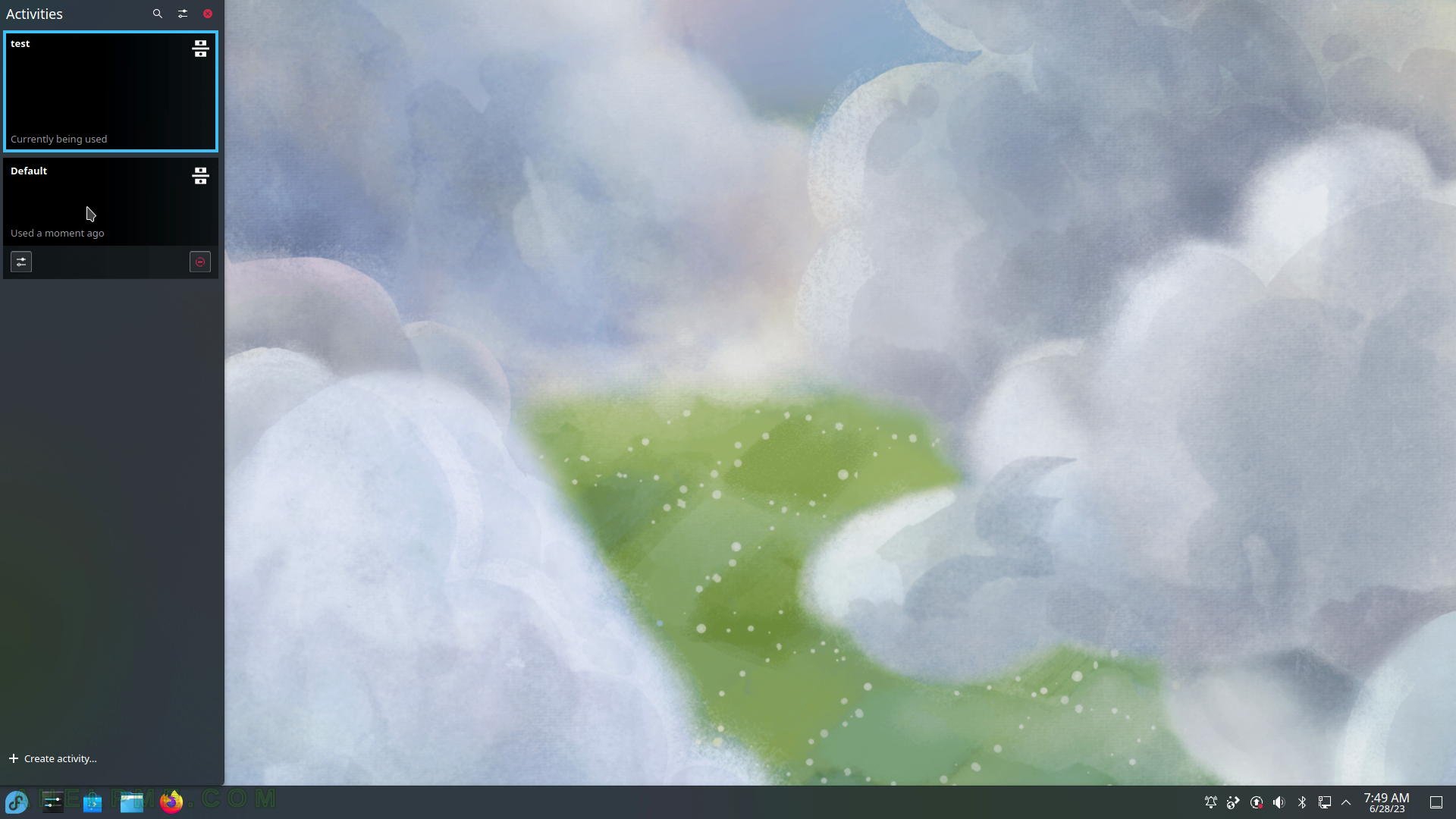
SCREENSHOT 47) Click on Fedora main menu then the Restart button to restart the computer.
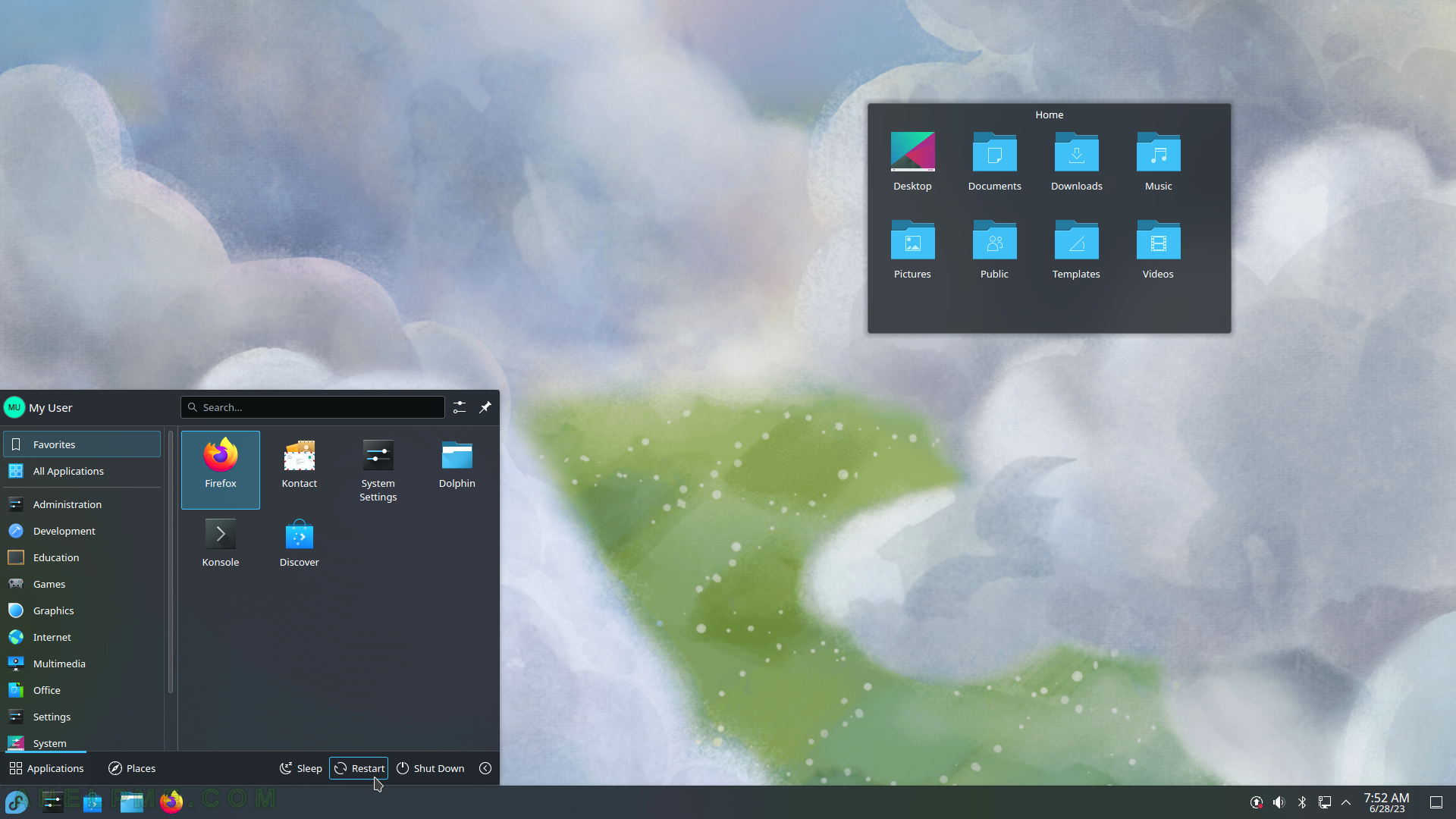
SCREENSHOT 48) Confirm to restart of the KDE Plasma Desktop.

SCREENSHOT 49) Lock and Log out is just an icon on the bottom right corner of the Fedora main menu.
Click on “Lock” to lock the user’s desktop.
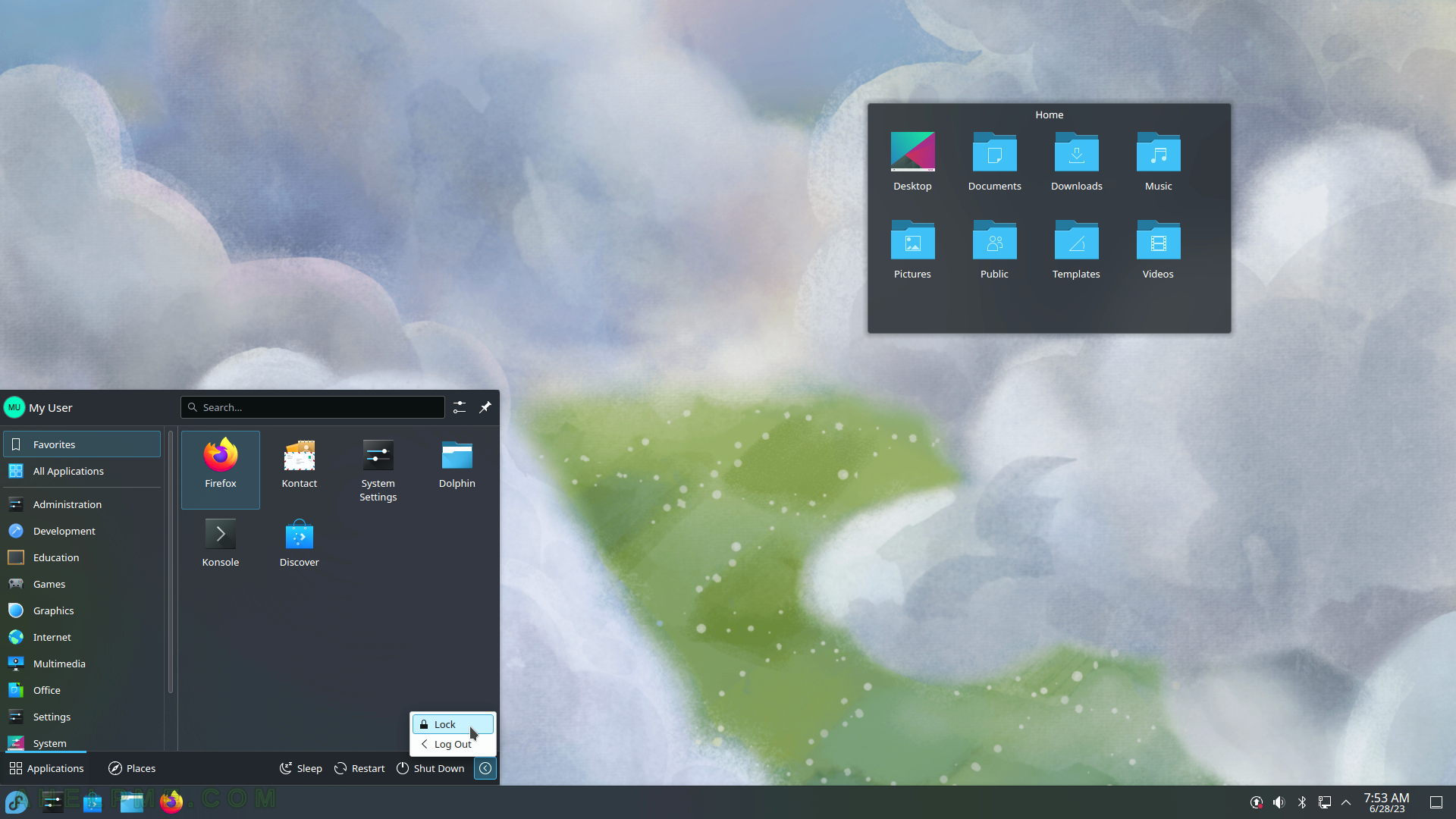
SCREENSHOT 50) The screen session of the current user has been locked.
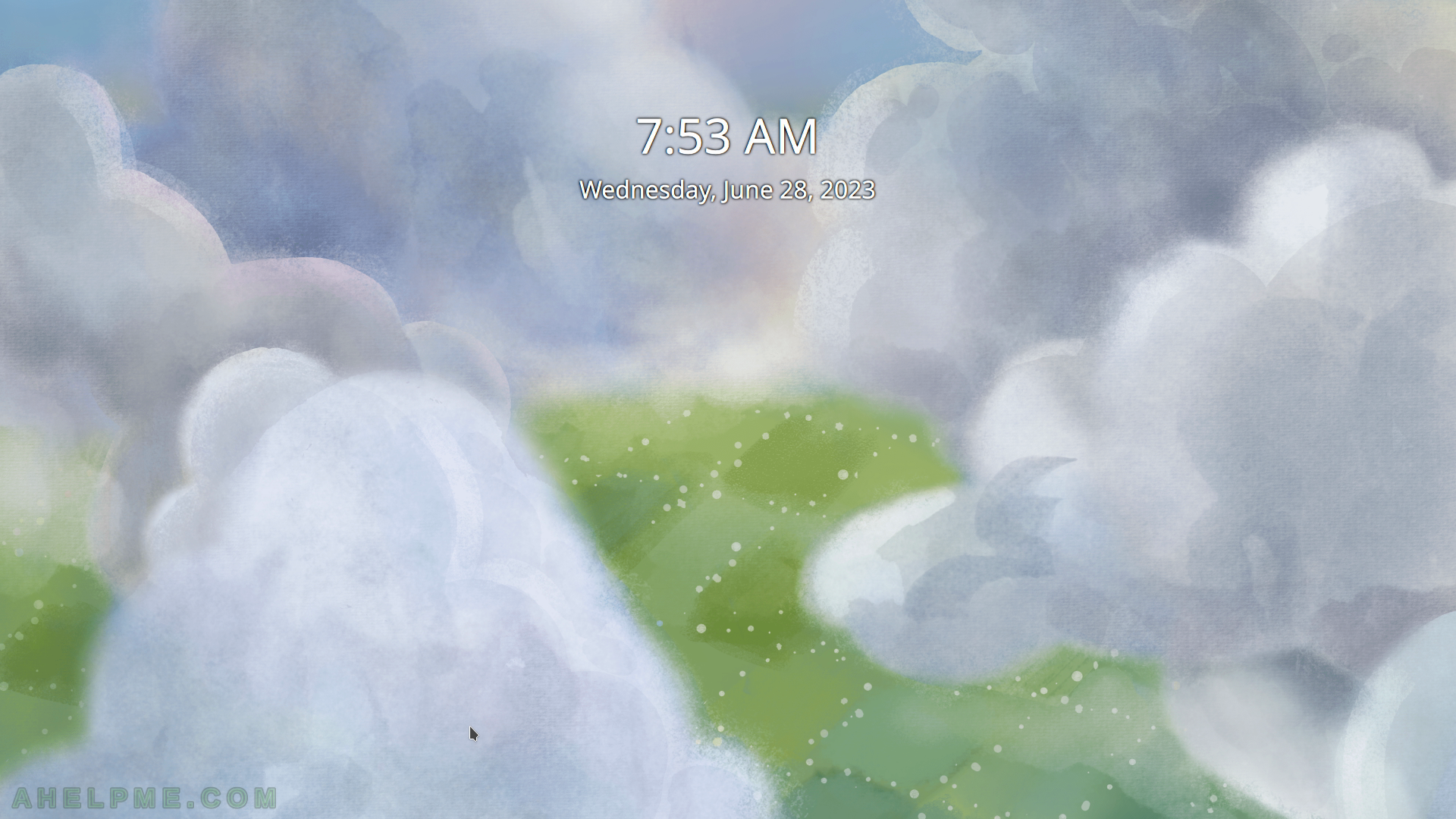
SCREENSHOT 51) Type the password to unlock.
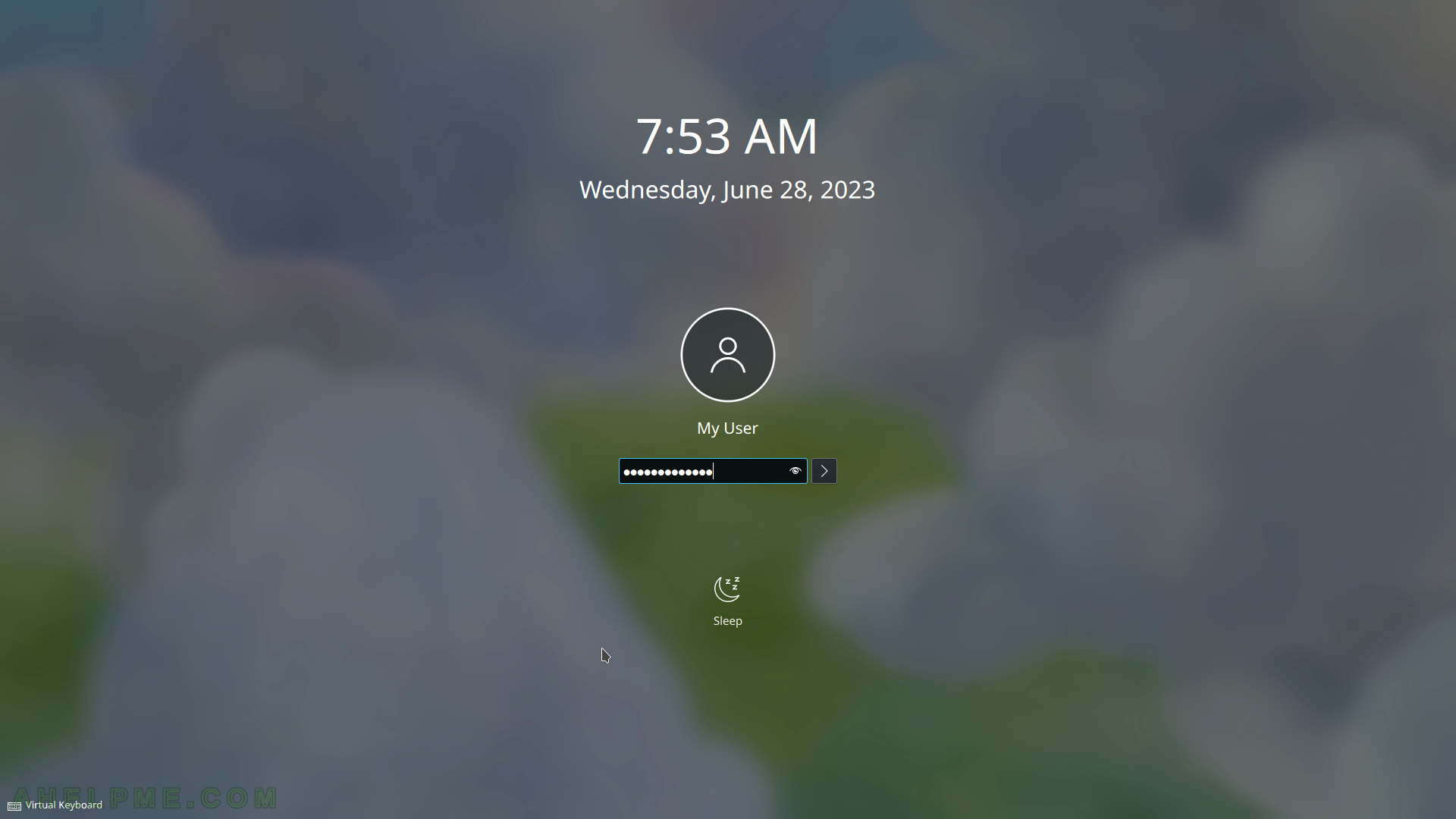
SCREENSHOT 52) KDE main menu – Applications
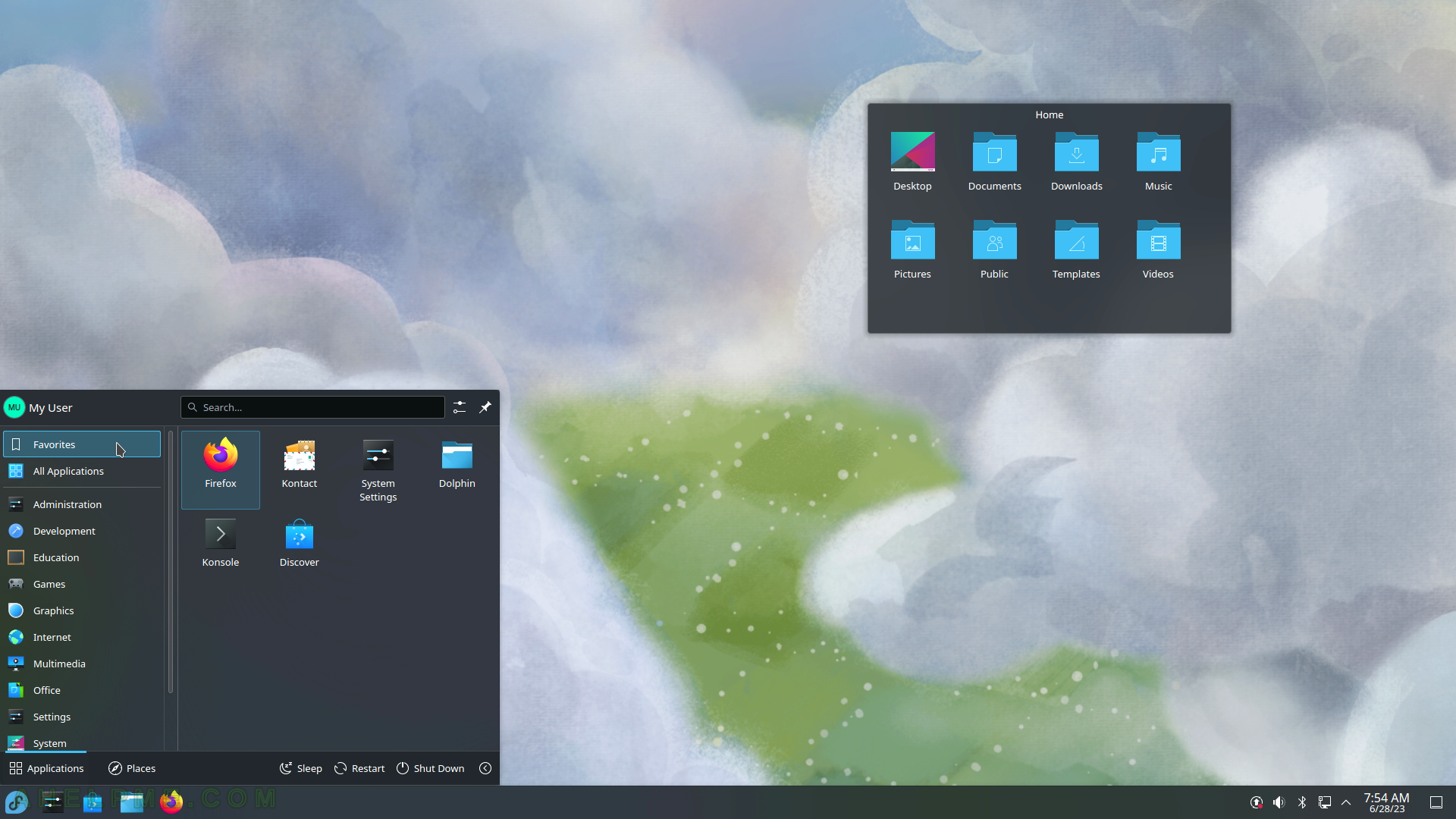
SCREENSHOT 53) The All Applications show all the applications with icons on the main menu alphabetically sorted.
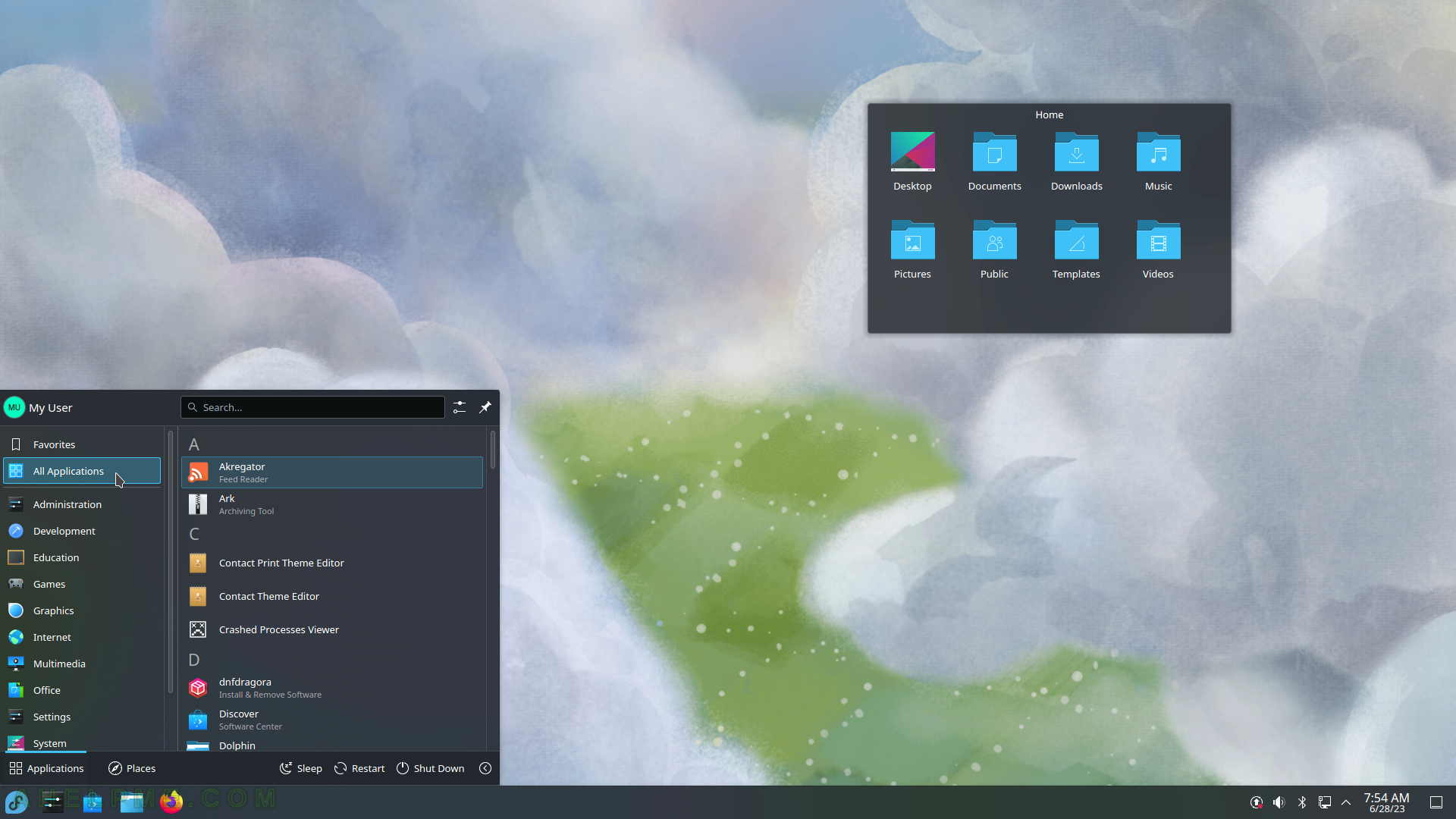
SCREENSHOT 54) The Administration sub-menu contains applications: dnfdragona (Install & Remove Software) and firewall-config (Firewall Confirmation).
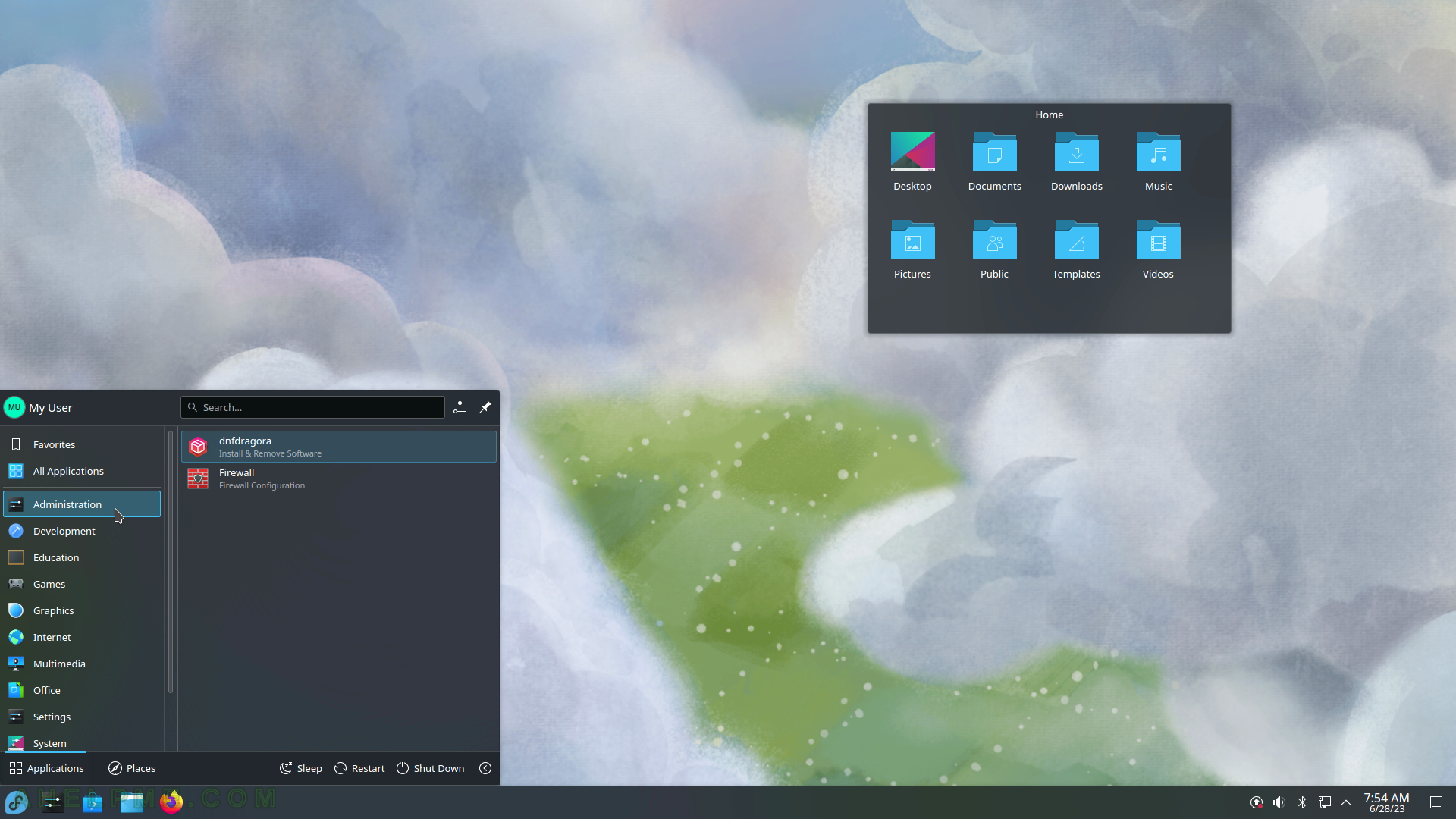
SCREENSHOT 55) Opening the dnfdragona for the first time will make a package cache.
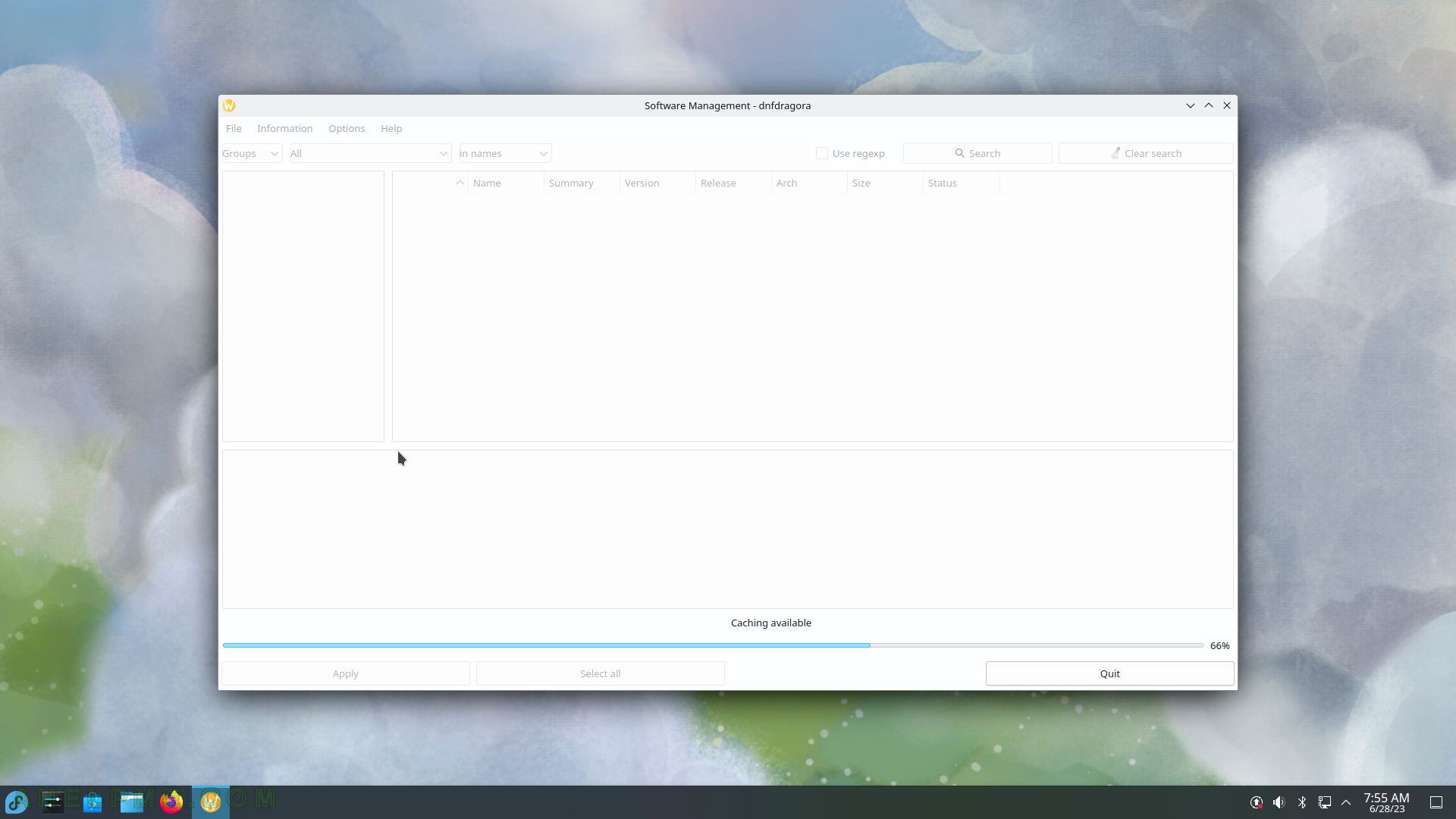
SCREENSHOT 56) Software Management – selected the nano program, a console text editor.
In dnfdragona, there are all programs installed in the system – even the system and console programs. It is like a graphical user interface of the Fedora DNF console utility.
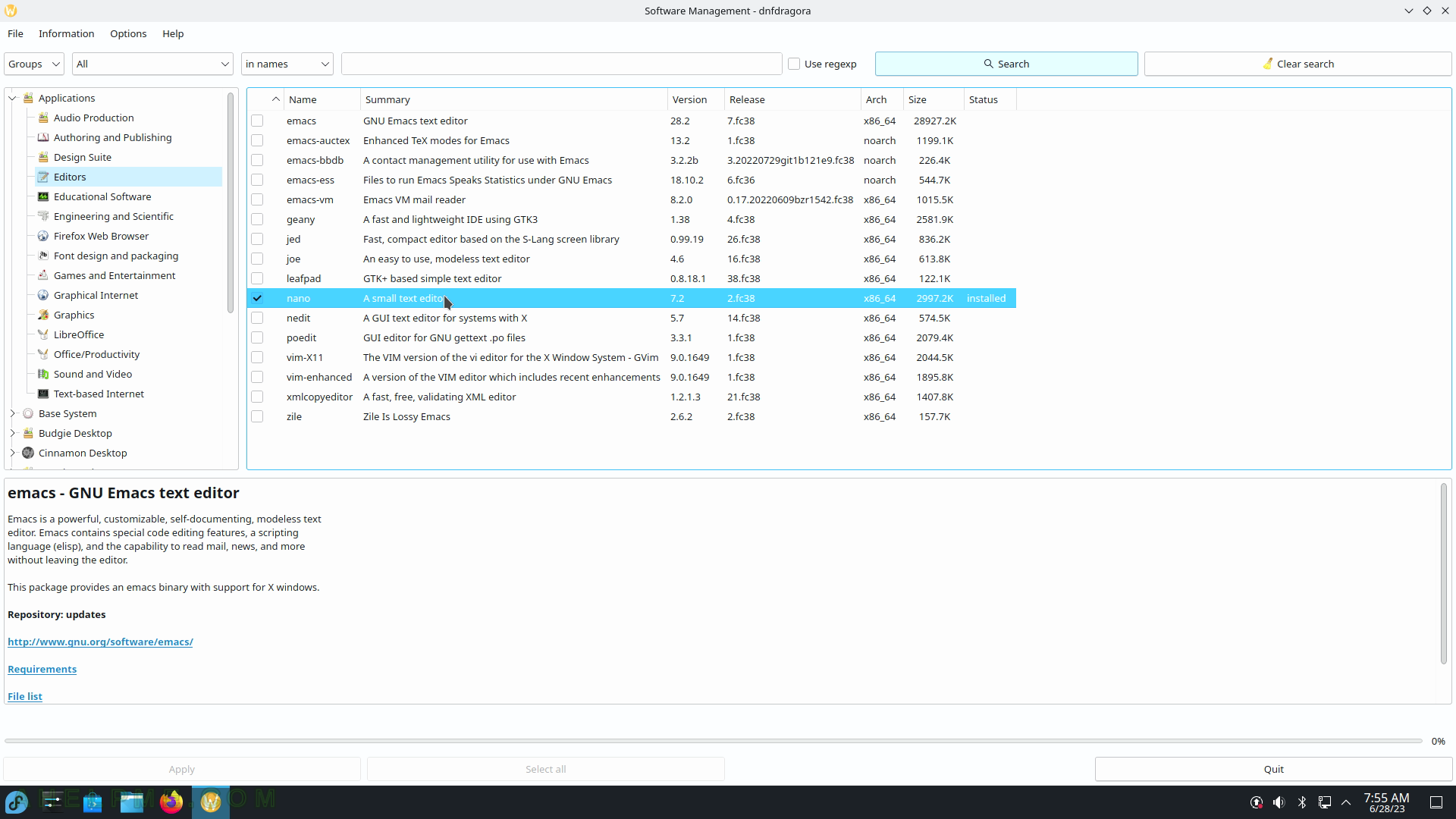
SCREENSHOT 57) dnfdragona 2.1.2
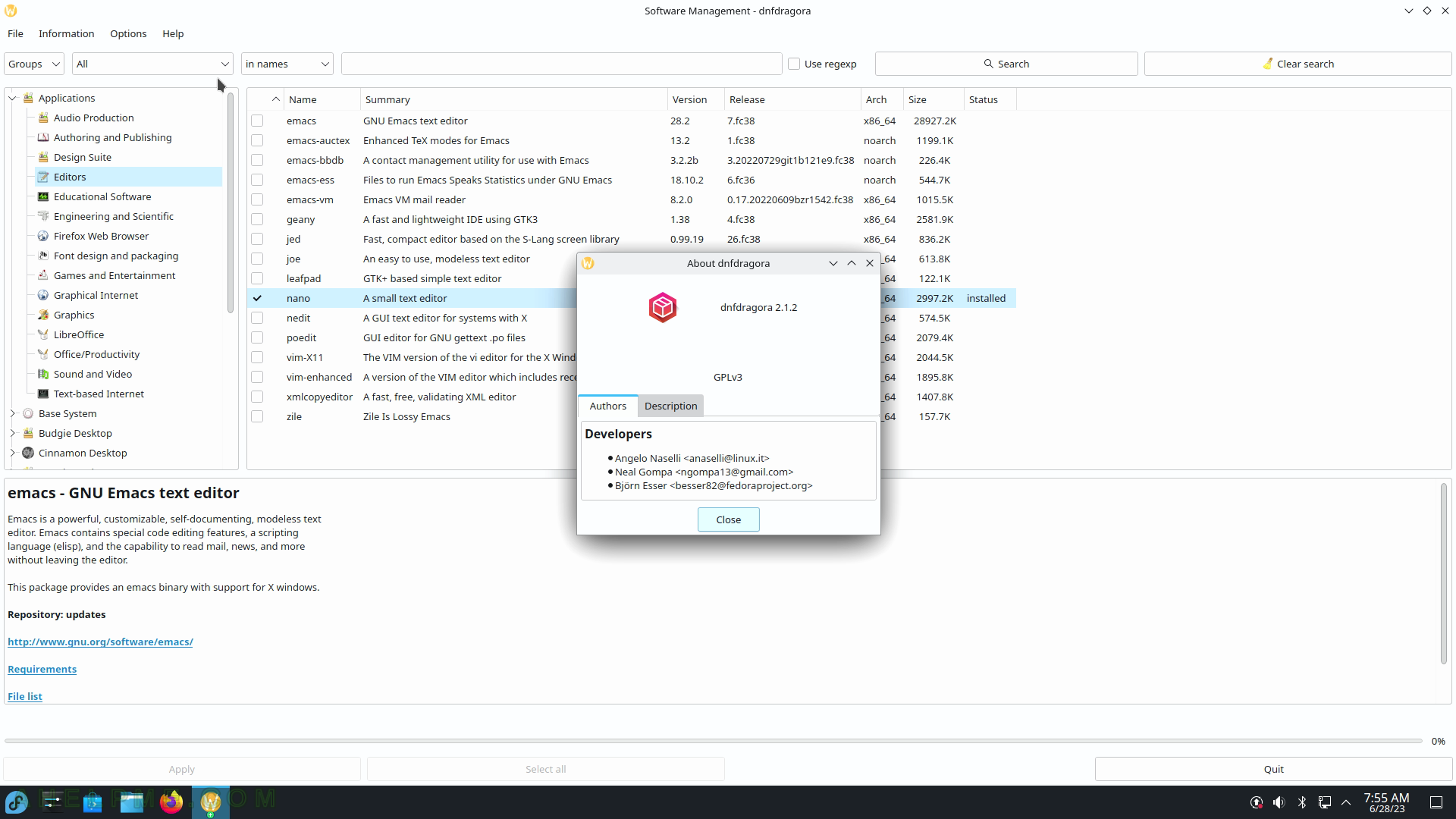
SCREENSHOT 58) Search in the search box the chromium word and check the checkbox in front of the chromium web browser application to install.
To install the checked application just click on the “Apply” on the bottom. There is an info sector with some links like ChangeLog, Requirements, and more.
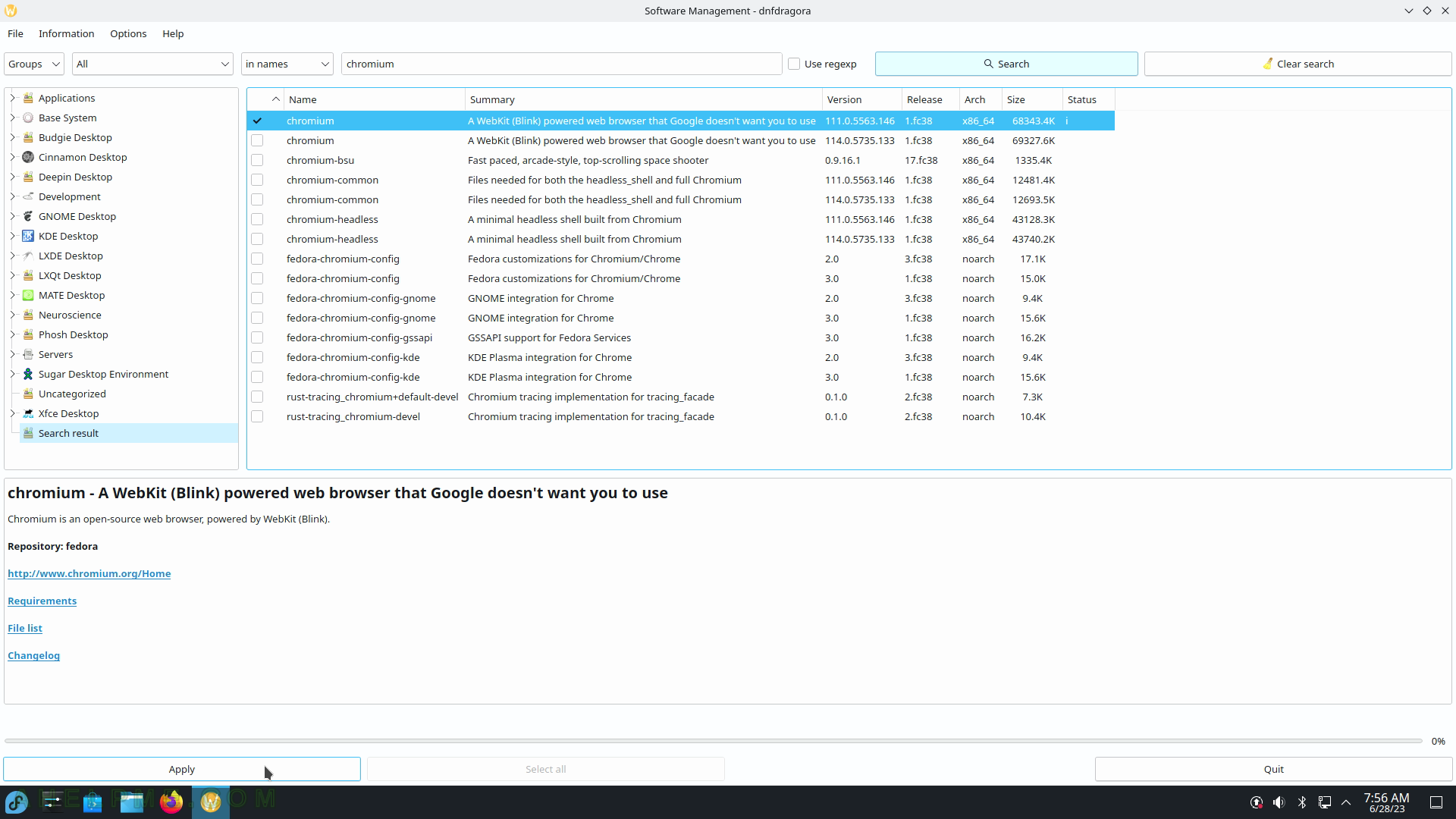
SCREENSHOT 59) The Software Management will show all the packages, which should be installed along with the selected chromium.
Click on “Ok” to begin the Chromium installation.
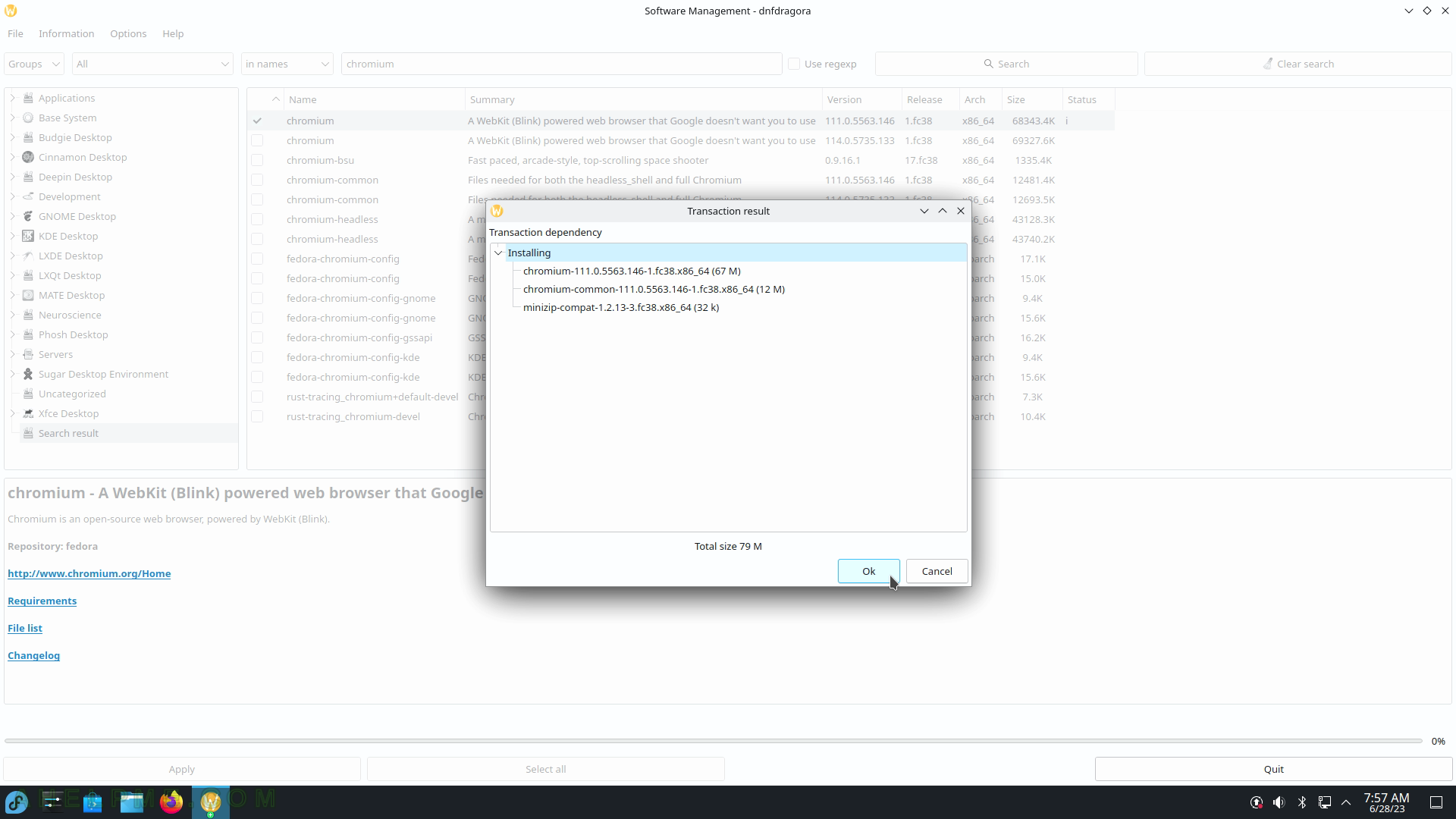
SCREENSHOT 60) An administrative user is needed to install software and a password confirmation of the user is required.
Type the user’s password and click on “OK” or press the “Enter” key.
